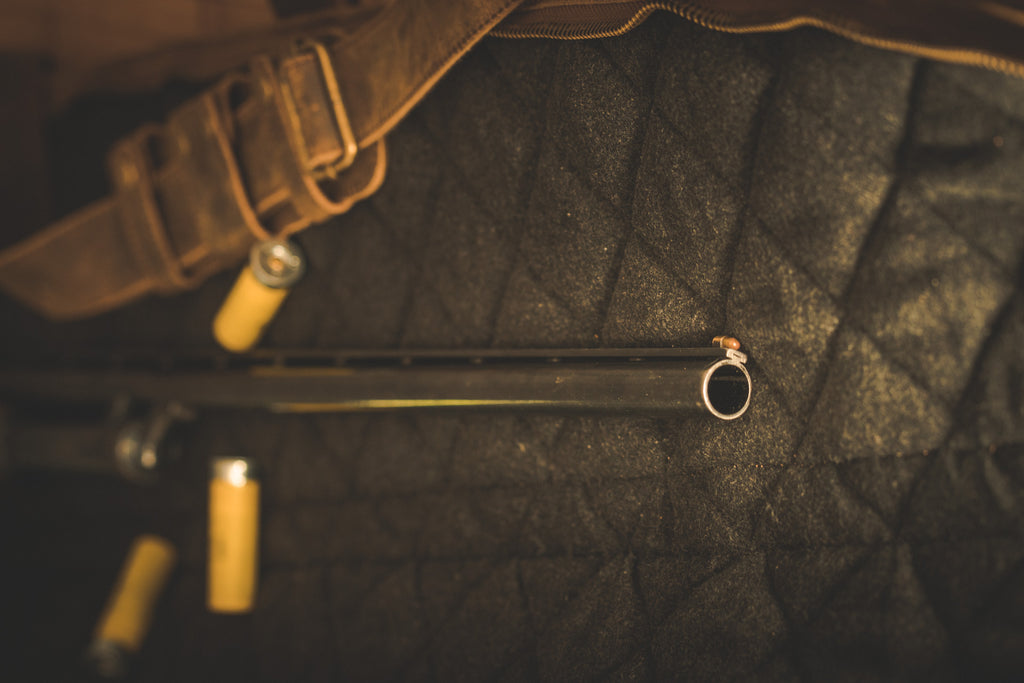Identifying and Measuring a Fixed Choke

We are very fortunate that today most shotguns purchased come with interchangeable chokes. In the past, that was not the case. Fixed choke tubes were the standard, with some poly or adjustable chokes following close behind. The versatility of screw in choke tubes is unmatched, but there isn't anything wrong with fixed chokes.

Double guns overcome this limitation by having each barrel choked differently. Normally, one barrel would have a more open choke, while the other a tighter one. The thought process being that your follow up shot would be slightly further than the initial.
What is a Choke?
First and foremost, we need to identify what a choke is. Renowned custom gunmaker Steven Dodd Hughes defines it very well in his book Fine Gunmaking: Double Shotguns. He defines the choke as, “The amount of constriction in a shotgun’s muzzle to hold the shot pattern together longer… Choke constriction has little to do with the actual choke measurement. It has everything to do with the difference between the choke and bore dimensions.”
The common choke sizes in the U.S. are; Cylinder, Skeet, Improved Cylinder, Modified, Improved Modified, Full, and Extra Full. In England, their chokes are identified as Cylinder, ¼, ½, ¾, and full. We’re going to focus on the U.S. chokes for this article.
Three Ways to Identify Your Fixed Choke
Below are three ways you can identify your fixed choke. You’ll notice that I don’t use one of the commonly sold “Choke gauges”. They will get you somewhat close, however as mentioned above, the choke is the difference between the bore size and choke size.
Barrel Markings
Most manufacturers will mark the barrels with the choke size somewhere. This can be anything from flat out having “Full” stamped on the side to being a scavenger hunt of decoding symbols and letters.
Early Brownings are marked with a series of asterisks to denote choke size. Also, under the forearm on the barrel, the true bore size will be marked in millimeters.
Using the factory barrel markings is a great way to identify your choke. But, it is not always 100% accurate. This doesn’t help if the choke was opened up by a gunsmith at one point or another. It also isn’t the most accurate way as there can be variances in manufacturing as well as differences in each type of shot you use. For example, it is widely known that steel shot will shoot a tighter group than lead.
Measuring using a Bore Gauge
Measuring using a bore micrometer is the best way to do it if shooting on a pattern board is not an option. The bore micrometer is specially designed to accurately measure the actual diameter of the bore and choke.
The actual diameter of the bore is important, as shotgun bore sizes can vary significantly from gun to gun.

To identify the choke you need to measure your bore and choke diameter. The amount of constriction is what gives you your choke size. To get your constriction, you need to subtract the choke diameter from the bore diameter.
Bore Diameter - Choke Diameter = Constriction
For example, my Browning Sweet Sixteen has a bore diameter of .661” and a choke diameter of .654”. Therefore, it has .007” of constriction which identifies it as an Improved Cylinder choke.

The downside of this method is the cost of the bore micrometer itself. Brownells sells a set that covers most gauges that runs close to $600. Finding a gunsmith that has access to one of these gauges is a good option here. Also, every manufacturer uses different numbers for their constriction measurement. What measures as a Modified choke using this chart might be closer to an Improved Cylinder on a Winchester.
Shooting a Pattern Board
A choke is the measurement of constriction. Actual shotgun patterns are performance based. As I briefly mentioned before, your pattern can vary by shot type, shot size, powder type, and even powder charge. Two of the same guns with the same choke size side by side can shoot different patterns. Therefore, I tend to favor this method for checking or verifying your choke.

To do this, you need a large piece of paper or cardboard placed at 40 yards. Draw a central aiming point and shoot at it from that distance. Find the center of the pattern on the target and draw a 30 inch circle. I do this by attaching a 15” string to a sharpie and holding the other end in the center of the pattern. The pattern may not be centered on the point you drew, this helps you see where your gun is hitting compared to your aim.
Next, count the number of pellet holes inside that 30” circle and write that number down. Then, cut open one of your unfired shotgun shells and count the pellets inside. This is a tedious process but needs to be done. Divide the number of bb’s on target by the total number that was inside your shotgun shell, this will give you a percentage in the form of a decimal.
BB’s on target / Total BB’s = Percentage of BB’s on target
For example, if your shotgun shell has 350 pellets in it and you count 217 within that 30 inch circle, you would have 62% of your pattern on target at that range(217 / 250 = 0.62). Checking the chart below you can identify that choke as a Modified choke.

Using this method can add versatility to your fixed choke shotgun by identifying loads that shoot different spreads and using that load for different applications. It would be very beneficial to try this method with all of the different shells that you are using for hunting. It is also a good test to move up to a range that you shoot most birds at to see what your shotgun pattern looks like.
Changing a Fixed Choke
If you aren’t happy with the fixed choke in your shotgun you have a few options. First, you can take the barrel to a gunsmith to have them open it up to the desired size. This is done using bore micrometers and with a properly sized reamer. Not all gunsmiths are set up to do this work so it may pay to ask around and find someone familiar with the work.
It is also possible to have the barrel setup for interchangeable choke tubes. This process involves reaming out the end of the barrel and tapping it to a very fine thread that accepts the replaceable choke tubes of your choice. This isn’t possible on every shotgun as the barrel wall thickness may be too thin to safely support the threads. Briley does this modification more than anyone else in the country and charges approximately $250 per barrel, including three chokes of your choice.
Keep in mind that with any of these modifications it may hurt the value of your firearm and that needs to be considered. Some shotguns will be worth less money when choked to something other than what is marked on the barrel.
Fixed Chokes
Once again, there is nothing wrong with a fixed choke shotgun. It is up to the user to know its limits and how to optimize it. This system has worked for many years and continues to work today. If you have a firearm with fixed chokes I challenge you to go out to the range and pattern it, confirming your choke size. It is fun and I guarantee you will learn a lot from the experience.
Written by Kurtis Martonik
